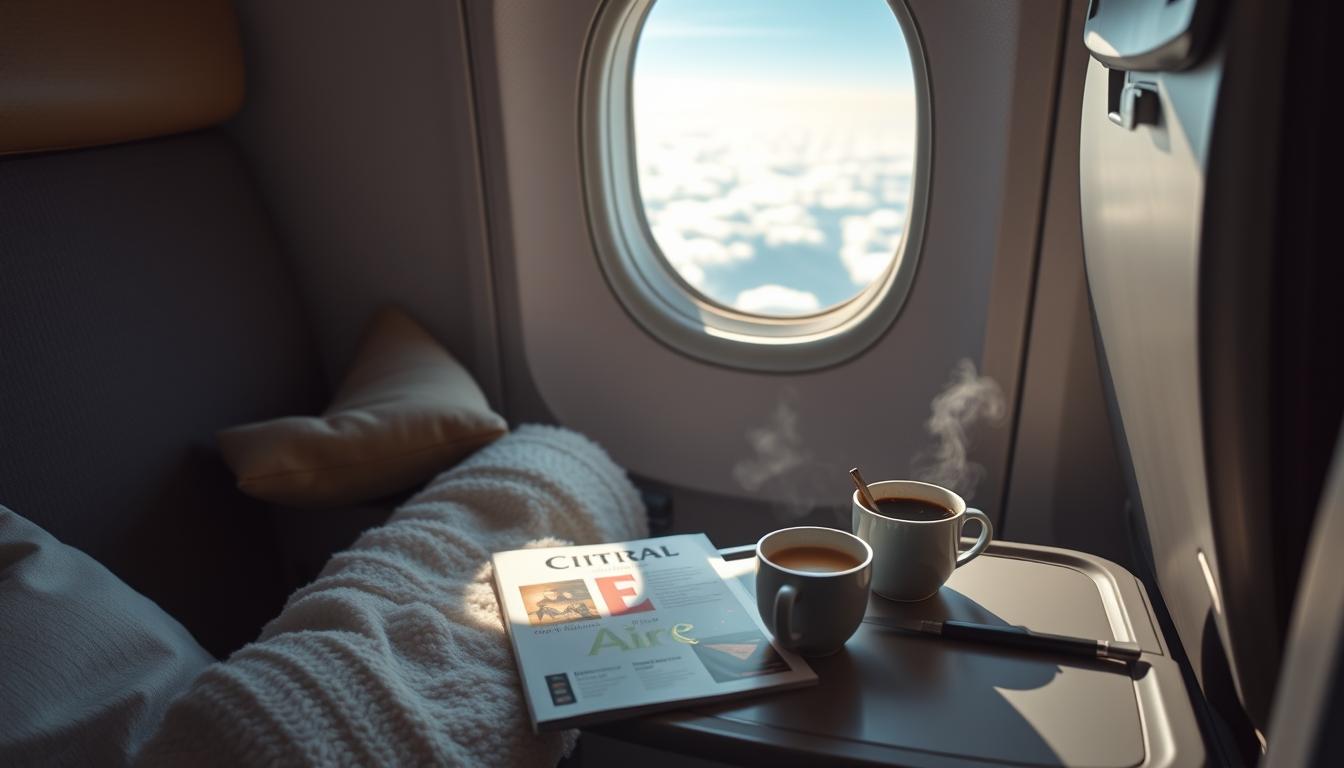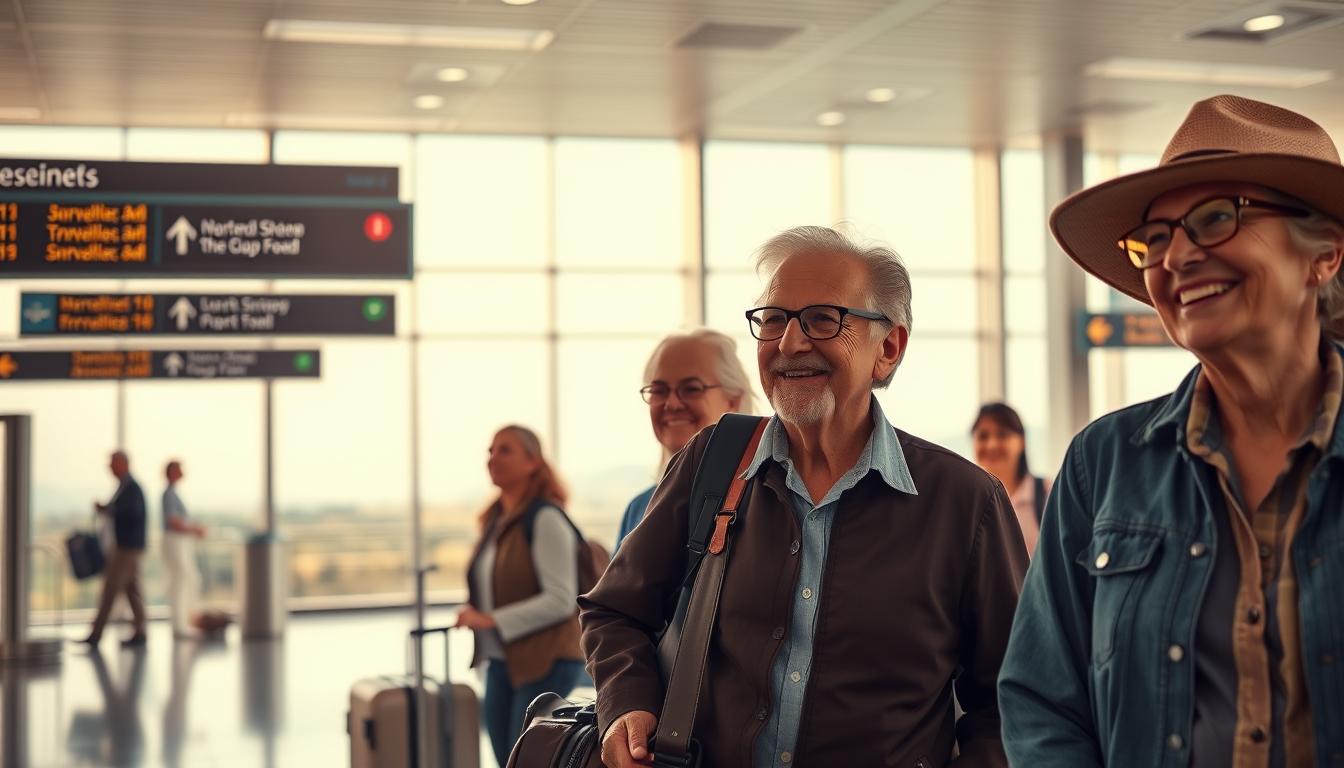Exploring new places keeps minds sharp and hearts full at any age. Studies show adventures boost brain health, ease stress, and strengthen bonds with loved ones. But like any great journey, it’s smart to prepare wisely. As Kathleen Cameron from the National Council on Aging reminds us, thoughtful planning turns potential risks into rewarding experiences.
We’ve partnered with trusted sources like the CDC and WebMD to craft practical advice. Whether it’s managing medications or choosing accessible destinations, a little preparation goes a long way. Our goal? To help you focus on creating memories, not managing mishaps.
This guide blends proactive safety strategies with the joy of discovery. You’ll learn how to handle health needs abroad, pack like a pro, and stay connected during trips. Let’s make every outing as safe as it is unforgettable.
Pre-Trip Planning and Medical Preparation
Smart journeys begin long before departure day. Proactive health care steps transform potential worries into peace of mind, letting you savor every moment. We’ve seen firsthand how thoughtful prep work creates smoother adventures.
Schedule a Pre-Travel Medical Check-Up
Book a doctor’s visit 4-6 weeks before leaving. This timing allows for vaccine updates or prescription adjustments. Kathleen Cameron emphasizes this step helps catch hidden issues early. Bring your itinerary to discuss time zones, activities, and climate risks.
Review and Organize Medications
Create a master list with drug names, doses, and prescribing doctors. Keep one copy in your bag and another with a travel companion. Use weekly pill organizers labeled with days/times. The CDC recommends carrying medications in original bottles with pharmacy labels intact.
Three quick care tips for medication management:
- Pack extra supplies for unexpected delays
- Research local pharmacies near your destination
- Store temperature-sensitive drugs in insulated cases
Accessibility planning matters too. Contact hotels about elevator access or shower rails. Many museums and parks now offer detailed accessibility maps online. With these steps, you’ll focus on experiences, not logistics.
Packing Essentials and Travel Medications
Smart packing transforms stress into confidence from departure to return. Keeping health needs organized ensures you stay focused on experiences, not logistics. Let’s explore how to protect what matters most while maintaining home routines away from home.
Carry-On Medication Best Practices
Always pack medications in your carry-on. TSA rules allow liquid medicines in reasonable quantities, but original containers speed up screening. Place them in clear, quart-sized bags for quick access. Keep a printed list of drug names, doses, and prescriber contacts with your medical documents.
Secure and Label Your Medications
Use padded cases with compartments to prevent spills. Attach labels showing your name, home address, and emergency contacts. For multi-stop trips, sort pills by day in color-coded organizers. Pack a 7-day surplus—delays happen more often than we’d like.
| TSA Tip | Benefit | Example |
|---|---|---|
| Original bottles | Avoids screening delays | Insulin vials with pharmacy labels |
| Digital documents | Backup access | PDF prescriptions on your phone |
| Insulated pouch | Protects temperature-sensitive items | Cool pack for arthritis injections |
Store document copies in separate bags—one with a companion, another in your luggage. Update emergency contacts in your phone under “ICE” (In Case of Emergency). With these steps, you’ll handle assistance needs smoothly while keeping home comforts within reach.
Navigating Travel Documents and Insurance
Peace of mind begins with organized essentials. Proper document management turns potential headaches into smooth experiences. We’ve seen how a few simple steps keep adventures on track when unexpected situations arise.
Copy and Secure Important Documents
Create digital and physical copies of passports, licenses, and insurance cards. Store originals in a waterproof pouch separate from duplicates. Leave backup copies with trusted contacts at home—this safeguards against loss or theft. Airlines and border agents often accept temporary copies during verification processes.
| Document Type | Storage Tip | Emergency Use |
|---|---|---|
| Passport | Hotel safe + phone scan | Embassy replacement |
| Medical cards | Wallet + cloud storage | Hospital visits |
| Itinerary | Printed + shared email | Flight rebooking |
Understand Your Health Insurance Options
Most U.S. health plans don’t cover international care. Specialized policies often include emergency evacuation and pre-existing condition coverage. Compare deductibles and claim processes—some providers require upfront payments abroad. The CDC recommends policies covering at least $100,000 in medical expenses.
Update emergency contacts in your phone and written plans. Review insurance terms for activity restrictions—some exclude adventure sports. With organized information and proper coverage, you’ll handle surprises calmly. Make these checks part of every trip’s planning phase.
Choosing Accessible and Senior-Friendly Accommodations
Your comfort starts with the right place to stay. Thoughtful lodging choices remove barriers before they arise, letting you focus on experiences. We’ve helped countless adventurers find spots that blend accessibility with peace of mind.
Ask About Accessibility Features and Hotel Safety
Always call hotels directly before booking. Front desk staff know details websites might miss. Ask these key questions:
- “Are there elevators or step-free paths to rooms?”
- “Do bathrooms have grab bars and non-slip mats?”
- “Is 24/7 security staff present on-site?”
Verify proximity to clinics or pharmacies—especially if managing health needs. Many hotels partner with local medical services for quick assistance.
| Feature | Why It Matters | Quick Check |
|---|---|---|
| Luggage help | Avoids strain | Ask about bell services |
| Room security | Protects valuables | In-room safes + deadbolts |
| Shuttle service | Eases flight connections | Confirm airport/plane schedules |
Read recent reviews mentioning “easy access” or “responsive staff.” Travel forums often share unadvertised details about storage space or lighting. Double-check luggage policies—some locations charge extra for oversized items.
Hotels near major airports often offer soundproofing for better rest between flights. Always confirm ground-floor options if stairs pose challenges. With these steps, you’ll create a secure home base for unforgettable journeys.
Understanding TSA Rules and Airport Security
Navigating airport security smoothly sets the tone for your entire journey. Knowing what to expect helps avoid last-minute stress. We’ve helped countless adventurers move through checkpoints with confidence, and these insights will keep your experience hassle-free.
Preparing for TSA Screening Procedures
Pack medications in clear, labeled containers for quick inspection. Keep boarding passes and IDs in an easy-to-reach pocket. Those over 75 may qualify for expedited screening—ask agents about this option.
Declare mobility aids like canes or wheelchairs upfront. Request a seat during screening if standing becomes challenging. Agents can provide private screenings for medical devices or assistive items.
Utilizing TSA PreCheck or Global Entry Benefits
PreCheck slashes wait times by keeping shoes and jackets on. Global Entry adds international arrival perks. Both options cost under $100 for five years—a smart way to simplify frequent trips.
| Program | Best For | Key Perk |
|---|---|---|
| TSA PreCheck | Domestic trips | Faster security lines |
| Global Entry | International plans | Customs shortcuts |
Update emergency contacts in your phone’s lock screen notes. Carry a doctor’s note for medical equipment. Remember: Clear communication with agents solves most issues before they escalate.
Tips for a Comfortable Airplane Experience
The hum of jet engines signals adventure, but comfort transforms hours aloft into enjoyable journeys. Cabin conditions challenge even seasoned flyers, with humidity levels often dropping below 20%—drier than most deserts. We’ve found simple adjustments make all the difference between arriving refreshed or exhausted.

Fuel Your Body, Protect Your Health
Low cabin moisture accelerates dehydration. Sip water hourly—avoid relying solely on beverage service. Bring an empty reusable bottle to fill post-security. Try these hydration boosters:
- Electrolyte tablets for water
- Cut fruit like oranges or cucumbers
- Lip balm and saline nasal spray
Movement prevents stiffness and circulation issues. Every 90 minutes, walk the aisle or do seated exercises. Rotate ankles, press knees together, and stretch arms overhead. Aisle seats simplify these routines while offering quicker restroom access.
Smart seat selection enhances comfort:
| Seat Type | Benefit | Consideration |
|---|---|---|
| Aisle | Easy movement | Potential cart bumps |
| Bulkhead | Extra legroom | No under-seat storage |
| Front cabin | Quicker exits | Higher cost |
Pack essentials within arm’s reach—noise-canceling headphones, eye masks, and compression socks work wonders. During turbulence, slow breathing (4-count inhale, 6-count exhale) calms nerves. Remember: Delays test patience, but preparation turns challenges into manageable moments.
Managing Public Health and Cabin Air Quality
Fresh air fuels great adventures, but plane cabins need extra attention. Aircraft humidity often drops below 20%, creating dry conditions that challenge respiratory health. We’ve seen how simple precautions keep explorers feeling their best while discovering new places.
Pack sanitizing wipes and alcohol-based gels in accessible pouches. Clean tray tables, armrests, and air vents before use—high-touch spots harbor germs. The CDC recommends washing hands thoroughly every 2-3 hours during flights.
Three smart strategies for cleaner air:
- Point vents downward to create personal airflow barriers
- Stay hydrated with electrolyte-enhanced drinks
- Choose window seats for reduced aisle traffic
Make sure to update vaccinations 4-6 weeks before trips. Carry a well-stocked health kit with masks, thermometer, and rapid COVID tests. Experienced adventurers know prevention beats treatment when exploring unfamiliar areas.
Air filtration systems refresh cabin air every 2-4 minutes, but circulation patterns matter. Avoid covering vents completely—gentle airflow helps disperse airborne particles. If neighbors cough frequently, politely ask crew about seat changes.
Following these practical steps helps turn every outing into a memorable adventure while keeping health in focus. Make sure your seatbelt stays fastened to comfort—and wellness—throughout the journey.
Protecting Valuables and Preventing Theft
Peaceful exploration begins with confidence in your surroundings. Securing belongings lets you focus on experiences rather than worry. These practical protection strategies blend modern tools with timeless wisdom.
Smart Storage Solutions
Hotel safes offer the first line of defense for passports and cash. Test lock mechanisms upon arrival—some require codes instead of keys. Keep a photo of stored items using your phone for quick reference if needed.
Three essential accessories deter pickpockets:
- RFID-blocking wallets for credit card protection
- Crossbody bags with slash-resistant straps
- Clothing with hidden interior pockets
| Item | Protection Level | Best Use |
|---|---|---|
| Neck wallet | High | Crowded markets |
| Decoy wallet | Medium | Distraction tactic |
| Locking luggage | Essential | Hotel storage |
Limit social media check-ins until returning home. Share real-time updates only with loved ones through private messages. If items go missing, contact local police and your insurance provider immediately—many policies require prompt reporting.
Carry a laminated emergency card with embassy contacts and replacement steps for critical documents. Remember: Preparedness transforms potential stress into empowered adventures. With these tips seniors trust, you’ll navigate destinations with renewed confidence.
Travel Safety for Seniors: Staying Secure on the Road
Journeys become richer when confidence meets preparation. Selecting travel insurance tailored to your needs acts as a safety net for unexpected events. Look for policies covering medical evacuation, trip interruptions, and pre-existing conditions—these features transform potential crises into manageable moments.
Consider temporary assisted living services if mobility or health needs arise during trips. Many agencies offer short-term companions who handle navigation, medication reminders, and luggage assistance. This support lets you enjoy destinations while maintaining independent living choices.
Plan road routes with built-in rest stops every 90-120 minutes. Use apps like Roadtrippers to locate scenic pull-offs with amenities. Share your itinerary with two trusted contacts, including alternate routes in case of closures or weather changes.
Create contingency plans for common scenarios:
- Keep a printed list of urgent care clinics along your path
- Store emergency cash in multiple secure locations
- Pack extra charging banks for navigation devices
Those managing memory care needs should carry wearable ID tags with emergency contacts. Balance self-reliance with practical assistance—accepting help with heavy luggage or complex directions preserves energy for meaningful experiences.
Regularly review your insurance policy’s fine print. Some providers offer discounts for group tours or assisted living partnerships. With thoughtful safeguards in place, every mile becomes an opportunity for discovery rather than worry.
Essential Preparations for Emergency Situations
Confidence thrives when plans meet possibilities. A well-crafted emergency strategy acts as your invisible travel companion, ready to assist when life throws curveballs. We’ve witnessed how clear protocols transform panic into purposeful action during unexpected events.
Craft Your Emergency Blueprint
Start by building a contact list with three key layers:
- Primary contacts (family, doctors)
- Local resources (nearest embassy, insurance helpdesk)
- Essential services (24/7 medical support, legal aid)
Share specific health conditions with companions and hotel staff discreetly. A simple “I may need quick access to my medication” alerts others without oversharing. Keep written notes from health care providers in your wallet—these accelerate treatment during emergencies.
| Document Type | Storage Tip | Access Protocol |
|---|---|---|
| Medical Summary | Phone + printed copy | Share with 2 trusted people |
| Insurance Cards | Front pocket | Show first responders |
| Prescriptions | Original bottles | Follow TSA guidelines |
Store digital copies in password-protected cloud folders. Update emergency info every 6 months or after major health changes. Situations may need swift decisions—preparedness lets you focus on solutions, not scramble for details.
Remember: Clear plans empower both you and those assisting. Share your blueprint with travel assistance contacts before departure. With this foundation, you’ll handle health care needs calmly while keeping adventures on track.
Ensuring Communication and Assistance During Travel
Staying connected transforms journeys into shared experiences. Regular check-ins with loved ones provide reassurance while exploring new destinations. Schedule daily updates through quick texts or video calls—morning and evening routines work well across time zones.
Smartphone tools simplify medication management. Set alarms labeled with specific pill names and dosages. Apps like Medisafe send reminders even if your phone’s on silent. For multi-country trips, sync schedules to local time using world clock features.
Three ways technology boosts confidence:
- Share real-time locations with family via Find My or Life360
- Use voice assistants for hands-free calling
- Store emergency contacts on lock screens
Specialized apps add extra security layers. Services like TravelSafe connect users to 24/7 medical support teams. Noonlight’s panic button alerts local authorities with your GPS coordinates. Many devices now offer fall detection that automatically notifies contacts.
Pack a laminated card with key health details and time-sensitive needs. Include preferred pharmacy chains and medication schedules. With these strategies, you’ll maintain living routines while embracing new adventures. Clear communication turns potential worries into moments of connection.
Conclusion
Every great adventure deserves a thoughtful send-off. By blending careful preparation with flexible curiosity, travelers create journeys that balance excitement with smart safeguards. Remembering medication protocols, securing documents, and understanding TSA requirements forms a foundation for worry-free exploration.
Clear communication strengthens every trip. Sharing itineraries with loved ones and practicing emergency plans ensures support when needed most. Those managing health needs abroad find confidence through organized kits and accessible lodging choices.
We encourage reviewing these guidelines before departure day. Double-checking TSA procedures and insurance coverage takes minutes but prevents hours of stress. Modern tools like translation apps and location-sharing services help travelers stay connected while embracing new horizons.
Adventure thrives when caution walks hand-in-hand with discovery. With each well-planned journey, you’ll collect memories richer than any souvenir. Now’s the time to pack your wisdom alongside your passport—the world awaits your next chapter.


